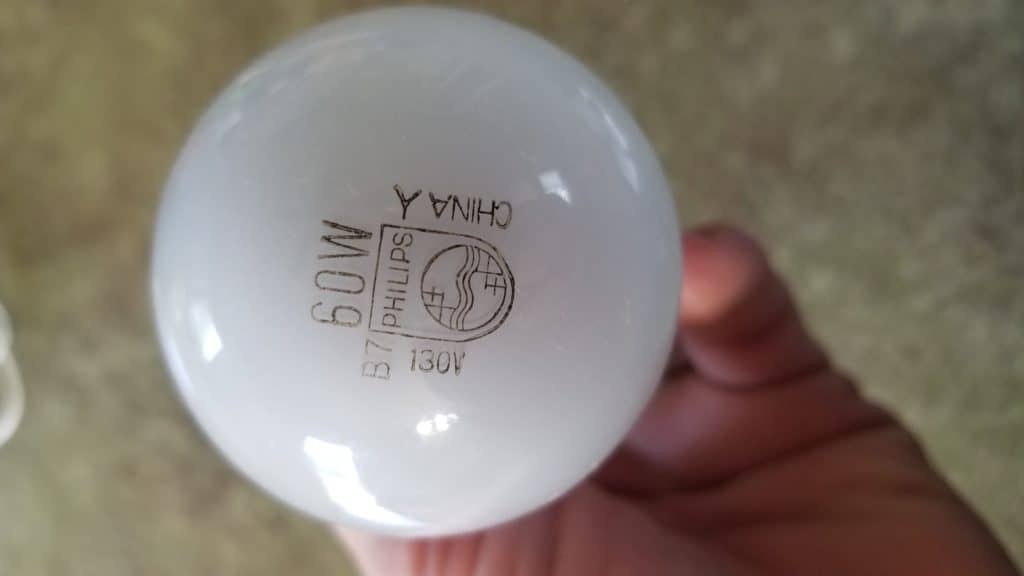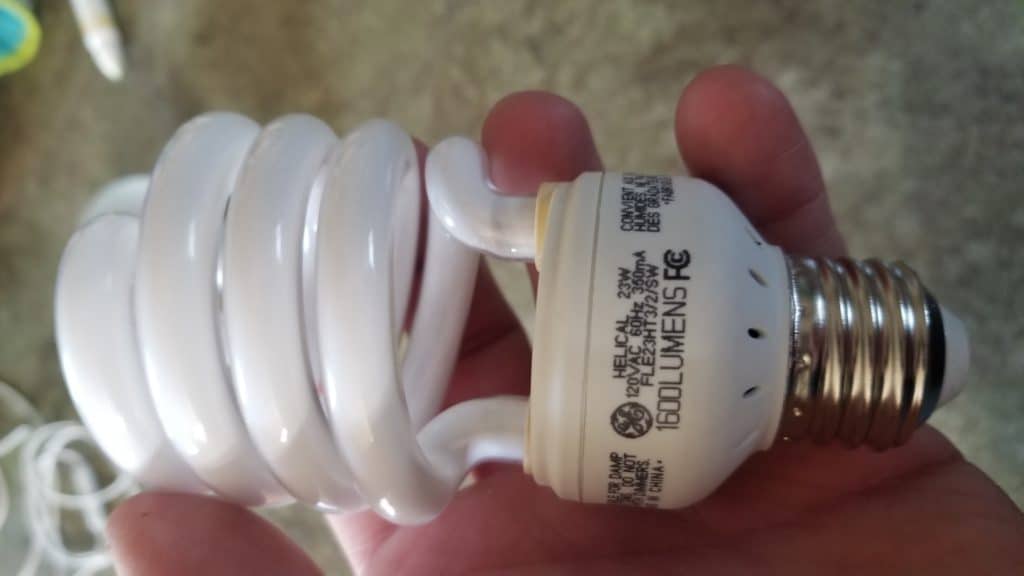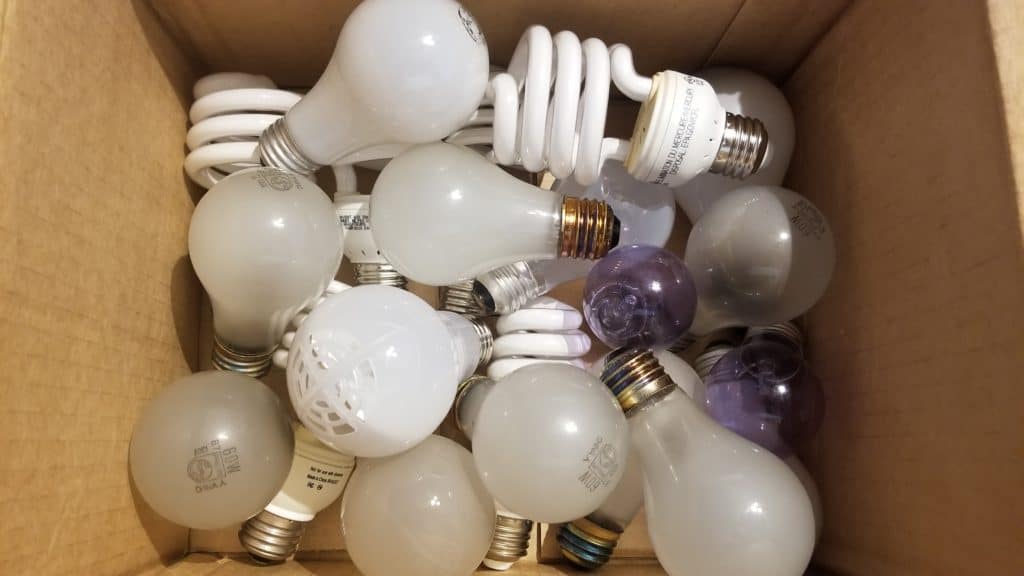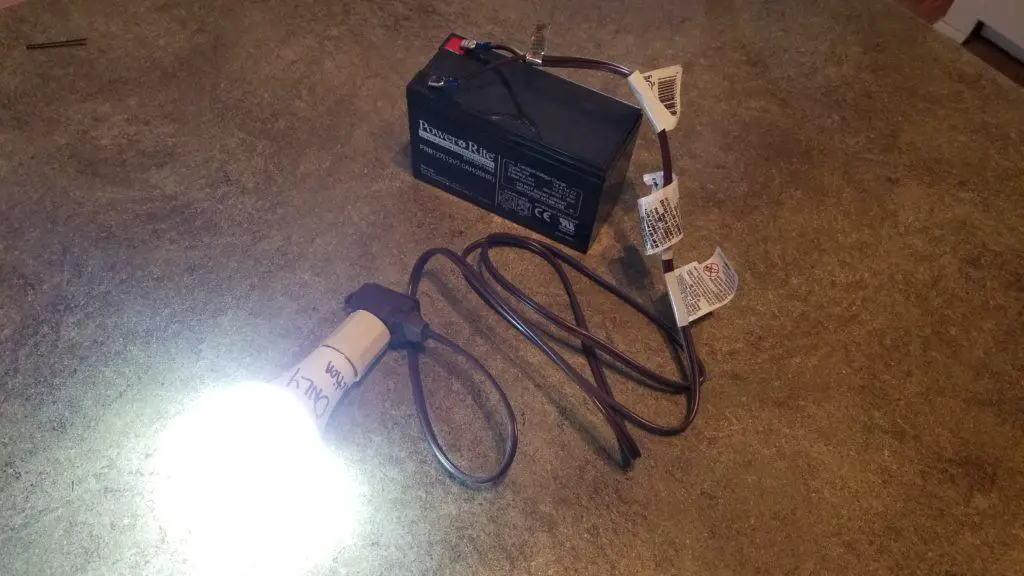If you’re going through a power outage and need some light, it’s a pretty common thought to wonder just how long your car battery can power a light bulb.
Moreover, you might be wondering how to turn a battery into a power source for that light bulb and what tools you might need.
I set off to do some research and here’s what I’ve found:
How long can a car battery power a light bulb?
A car battery for a mid-sized vehicle can power a 100-watt incandescent bulb for 3 hours, a 19-watt CFL bulb 15 hours, or a 9-watt LED bulb for 33 hours and still be able to start the car’s engine.
In this article, I’ll cover the energy available from a car battery, the math behind all of the different types of bulbs, a formula you can use for your particular situation, and the absolute best light bulb option for giving you light from your car battery!
How Long (hours) Can a Car Battery Power a Light Bulb?
| 200-315 CCA, or 40-60 RC, or 36-46.2 AH | 315-550 CCA, or 60-85 RC, or 46.2-58.8 AH | 550-1,000 CCA, or 80-190 RC, or 58.8-111 AH | |
|---|---|---|---|
| 60W Incandescent | 6.1-7.9 Hours | 7.9-10 Hours | 10-18.9 Hours |
| 75W Incandescent | 4.9-6.3 Hours | 6.3-8 Hours | 8-15.1 Hours |
| 100W Incandescent | 3.7-4.7 Hours | 4.7-6 Hours | 6-11.3 Hours |
| 14W CFL | 26.2-33.7 Hours | 33.7-42.8 Hours | 42.8-80.9 Hours |
| 19W CFL | 19.3-24.8 Hours | 24.8-31.6 Hours | 31.6-59.6 Hours |
| 23W CFL | 16-20.5 Hours | 20.5-26.1 Hours | 26.1-49.2 Hours |
| 9W LED | 40.8-52.4 Hours | 52.4-66.6 Hours | 66.6-125.8 Hours |
| 12v LED (3W) | 144-184.8 Hours | 184.8-235.2 Hours | 235.2-444 Hours |
How much Energy Does your Car Battery Have to Offer?
The first thing to clear up is that your car battery was designed and engineered to be what’s called a “starter battery” and not a “deep-cycle” battery. If you choose to run it down by powering light bulbs or any other appliance, you are doing irreparable damage to your battery.
The internal makeup of your car battery is different from that of a deep-cycle battery in many aspects. Car starter batteries have thinner lead plates that have more surface area and are closer together. This allows for maximum current flow when trying to turn over your ignition on a cold morning.

Deep-cycle batteries have thicker, further spaced, and less surface area with their lead plates. This allows for a lower but more constant flow of current for the long-haul. Deep-cycle batteries also have a protective alloy on their plates which protect them pretty well from sulfation build-up — a feature that car batteries lack.
Therefore, when you run your car battery down any depth of discharge below 90-100%, sulfation will start to buildup on the plates and it will be nearly impossible to reverse. Once this sulfation builds up enough it will increase the internal resistance of your battery which will make it harder to charge and harder to get a current out of.
It can also build up thick enough that it bridges the small gaps between the plates and shorts out your cells internally and destroys your battery.
So, can you power a light bulb with a car battery? Sure. But keep in mind that you’ve only got about 10-12 deep discharges before your battery is toast and you’ll be forking over $100 to get a new one for your car.
With that out of the way, we need to know a car battery’s approximate amp hours (AH) to estimate light bulb times. Since car batteries are rated in CCA or RC, there’s not an exact equivalent.
I have an article here where I extrapolated charging data from a battery charger manufacturer to get an equivalent AH time for various CCA/RC ranges and the results are in the table below.
Amp Hour Estimates Based On Cold Cranking Amps or Reserve Capacity
| If Your Sticker Reads: 200-315 CCA, or 40-60 RC | If Your Sticker Reads: 315-550 CCA, or 60-80 RC | If Your Sticker Reads: 550-1,000 CCA, or 80-190 RC |
| 36 - 46.2 AH | 46.2 - 58.8 AH | 58.8 - 111 |
We’re going to stick with a 58.8 AH car battery for our examples below, but you can do the same formula for any AH rating.
What do you need to run a Conventional Light Bulb (Incandescent, CFL, LED) from your Car Battery?
Aside from extension cords, you are going to need an inverter to convert your battery’s DC (Direct Current) power to AC (Alternating Current) so that your bulbs will use the same type of electricity that comes out of your wall outlets.
These types of bulbs are not the only options and not even close to being ideal, but they are what most people have readily available at home. Don’t worry though, I’ll cover the best option at the end of the article!

Depending on which type of bulb you plan on running and how many will determine the inverter size you will want. If you’re only going to have one inverter, I would recommend at least an 800-watt if you’re only going to have one inverter so that you can also power other small appliances if needed.
This inverter on Amazon is more than adequate to power multiple light bulbs and you might even be able to run your fridge while your car is running. If you are looking for a dedicated model for your fridge, I would recommend sizing up to at least the 1,000 watt model after you click the link.
The last thing to note about inverters is that the process of switching DC to AC power is about 85% efficient, which means you’ll have to divide your lightbulb watts by 0.85 to get the true wattage-draw from your battery.
The examples below are going to assume that you are powering the lightbulb while the battery is disconnected from the car or the car is NOT running so that we can predict the worst-case scenario.
You could, of course, run your light bulbs with the inverter while it is hooked up to your running vehicle, and you’d be able to power them indefinitely until you run out of gas (you could just start the car up every two hours or so for 30 minutes to top the battery off and extend your gas tank for days by doing this).
Now, let’s get to the Math! I promise I’ll keep this simple!
The Primary Formula You’ll Want to Use to Calculate Your Battery’s Expected Time before it Fully Drains:
705.6wH / (Total Bulb Watts/0.85) = Full Discharge Time
705.6 watt hours comes from our 58.8 AH equivalent car battery being multiplied by 12-volts. Amps * Volts = Watts
Remember that the 0.85 is for the inefficiency of running the inverter.
Multiply the Full Discharge Time by .5 (or divide by 2) to get the halfway mark. You won’t want to exceed the 50% mark with your car battery if you want to still have a chance at starting your car back up without a jump!
How Long Can a Car Battery Power an Incandescent Lightbulb with an Inverter?
A 58.8 AH car battery discharging to only 50% should be able to power a single 60-watt incandescent bulb for 5 hours, a 75-watt bulb for 4hours, or a 100-watt bulb for 3 hours and still be able to start the car’s engine.
705.6 wH / (60w/0.85) = 10 hours ==> or 5 hours to only discharge 50%
705.6 wH / (75w/0.85) = 8 hours ==> or 4 hours to only discharge 50%
705.6 wH / (100w/0.85) = 6 hours ==> or 3 hours to only discharge 50%

How Long Can a Car Battery Power a CFL Bulb with an Inverter?
A 58.8 AH car battery discharging to 50% should be able to power a single 14-watt CFL for 21.4 hours, a single 19-watt CFL for 15.8 hours, or a single 23-Watt CFL for 13 hours and still be able to start the car’s engine.
705.6 wH / 14w/0.85) = 42.8 hours ==> or 21.4 hours to only discharge 50%
705.6 wH / (19w/0.85) = 31.6 hours ==> or 15.8 hours to only discharge 50%
705.6 wH / (23w/0.85) = 26.1 hours ==> or 13 hours to only discharge 50%

How Long Can a Car Battery Power an LED with an Inverter?
A 58.8 AH car battery discharging to 50% should be able to power a single 9-watt LED light bulb with an inverter for about 33.3 hours and still be able to start the car.
705.6 wH / (9w/0.85) = 66.6 hours ==> or 33.3 hours to only discharge 50%

What’s the Best Option for Powering a Lightbulb with your Car Battery?

If you really want to stretch out your car battery’s capacity, you’ll want to skip the inverter altogether. This means that you’re going to need a 12-volt LED bulb and some simple wiring to your car’s battery to make it happen.

This option will use a fraction of the energy as the bulbs above because will be keeping a straight DC to DC connection and not losing 15% of the battery’s capacity through the inversion process of switching DC to AC.
There are a few methods of doing this, and this YouTube video is not mine, but you can learn the basics of how to wire up a 12-volt system very easily.
How Long Can a Car Battery Power a 12-volt LED light?
A 58.8 AH car battery with a direct DC connection to the light bulb (no inverter) and only discharging down to 50% should be able to power a single 12-volt, 3-watt LED light bulb for 117.6 hours and still be able to start the car.
Note: the 15% inverter inefficiency is not a factor when you connect directly to the battery with DC power.
705.6 wH / 3w =235.2 hours ==> or 117.6 hours to only discharge 50%
